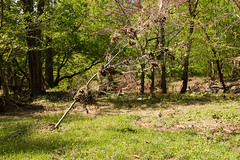Long, narrow stretches, only as wide as the floodplain
Floodplains of streams, including floodways and floodplain terraces
Varies from poorly drained, fertile, silty loams to well-drained, coarse sediments such as sand and cobbles
Varies—new minerals and organic matter regularly introduced during floods





